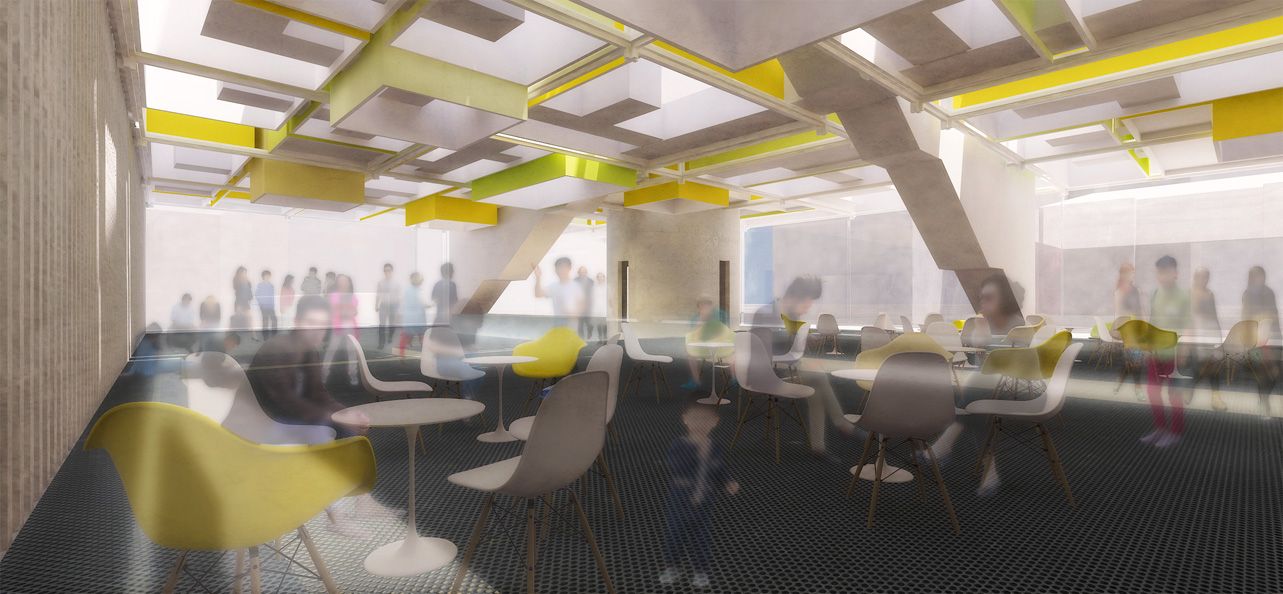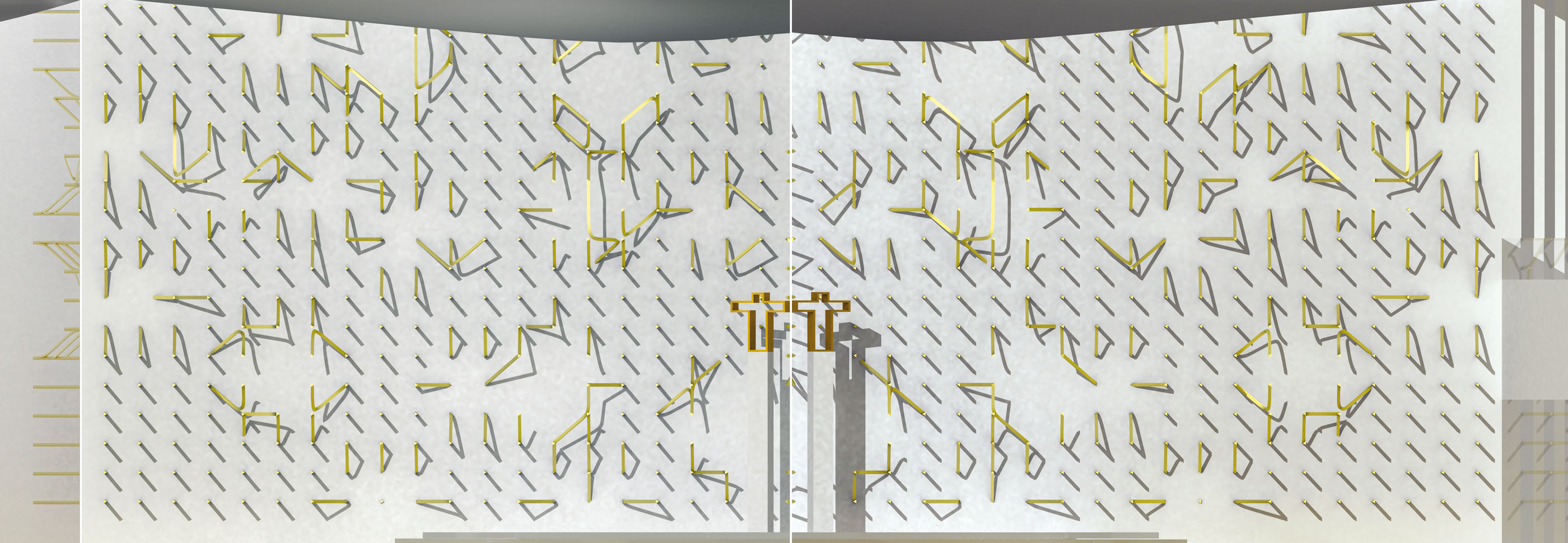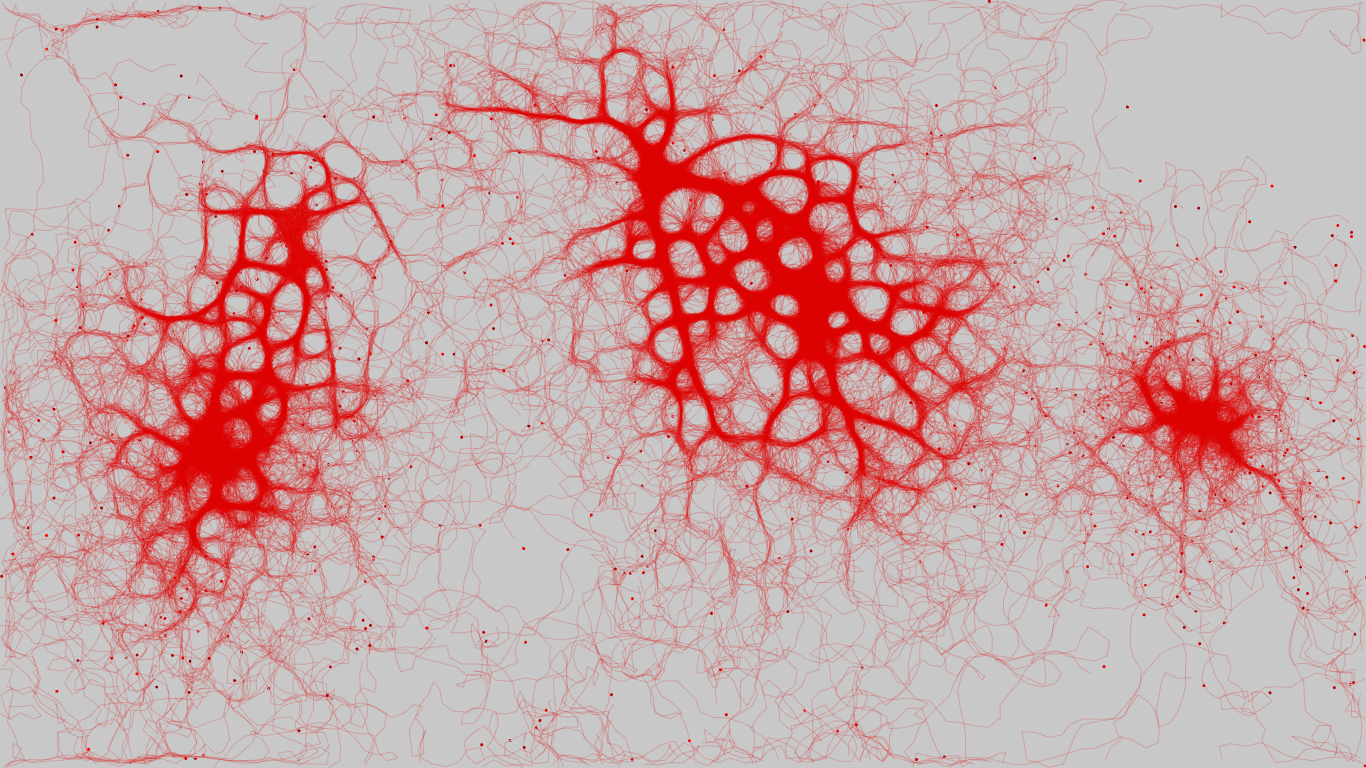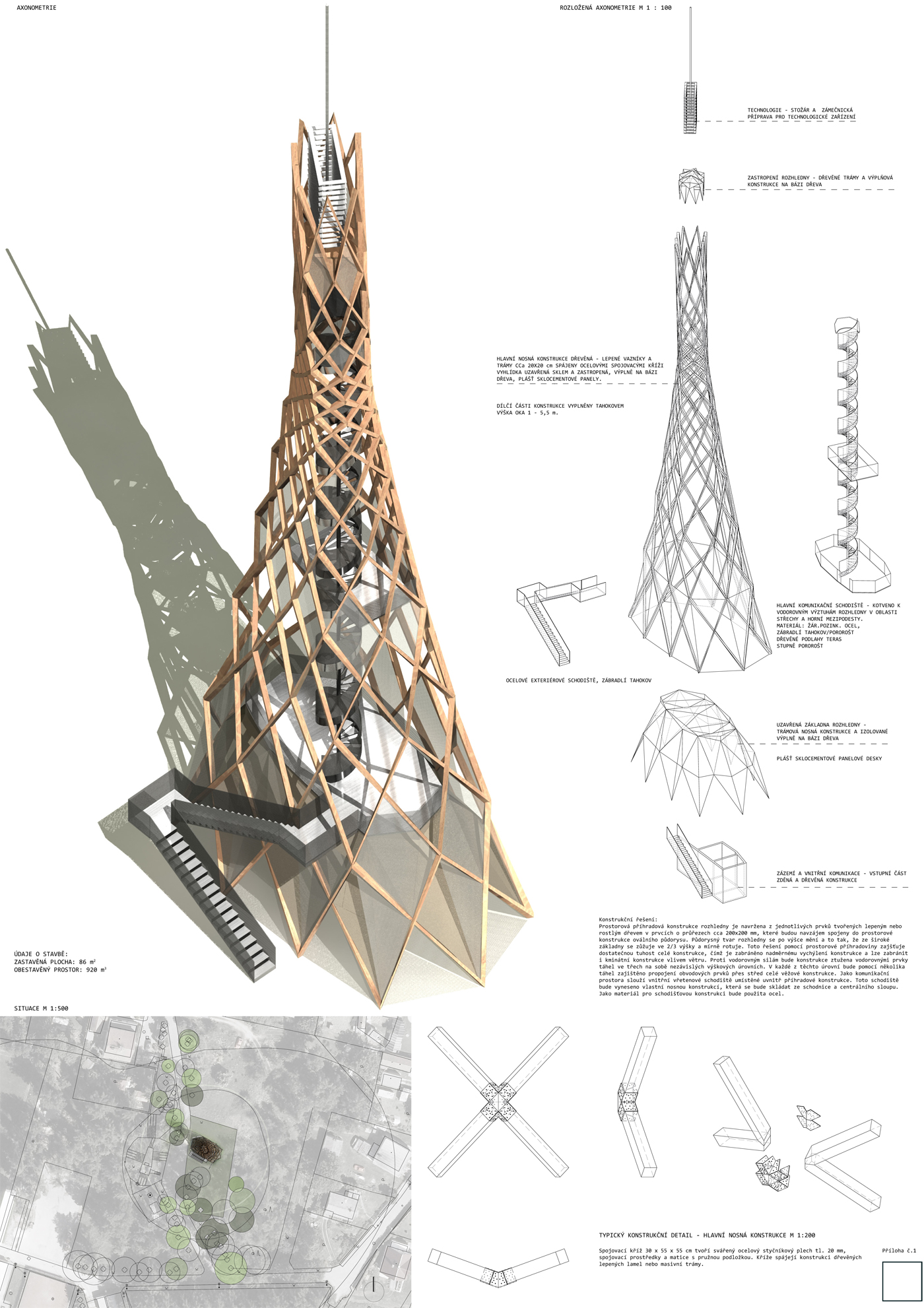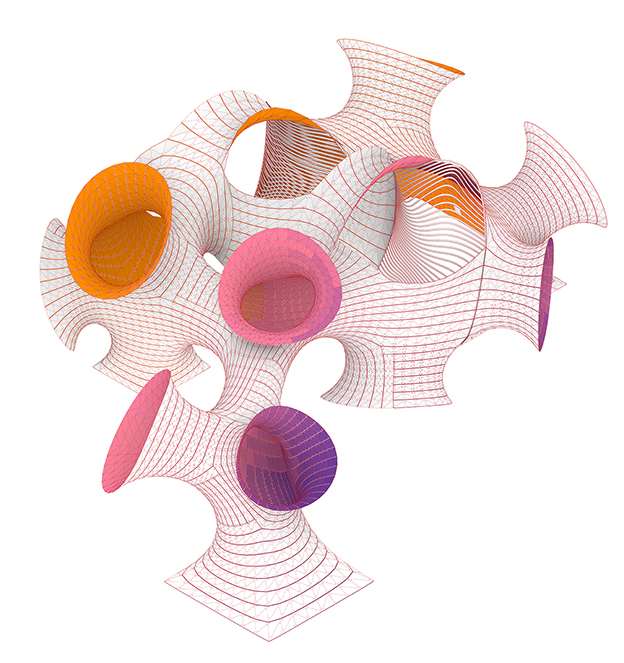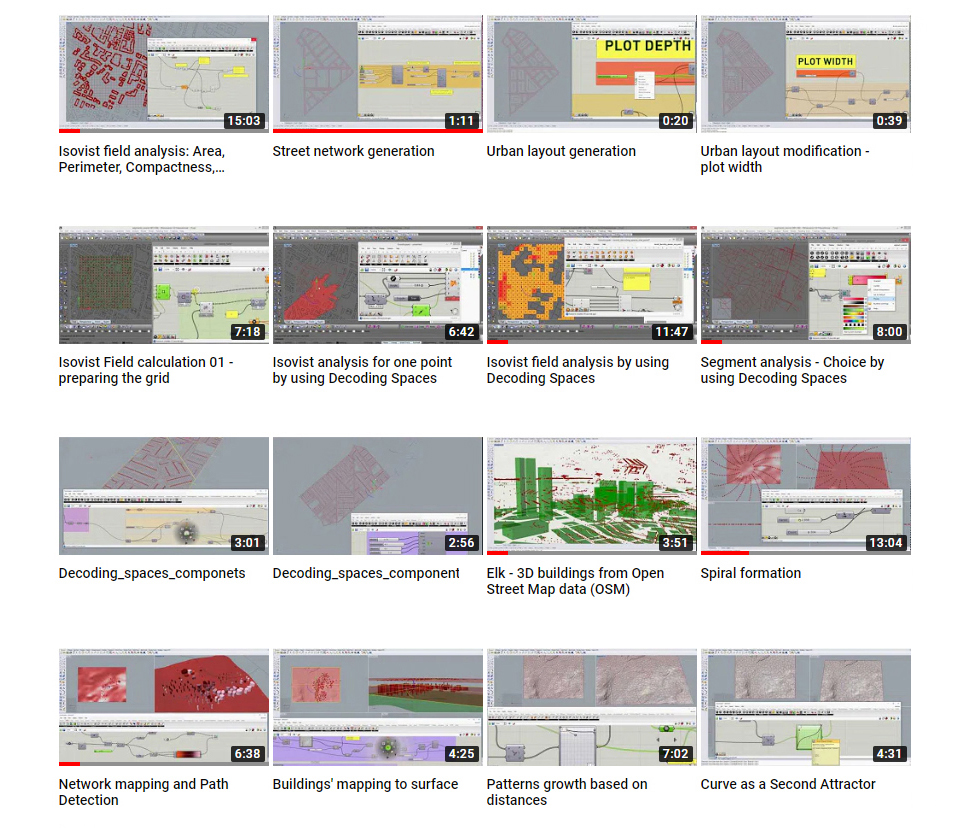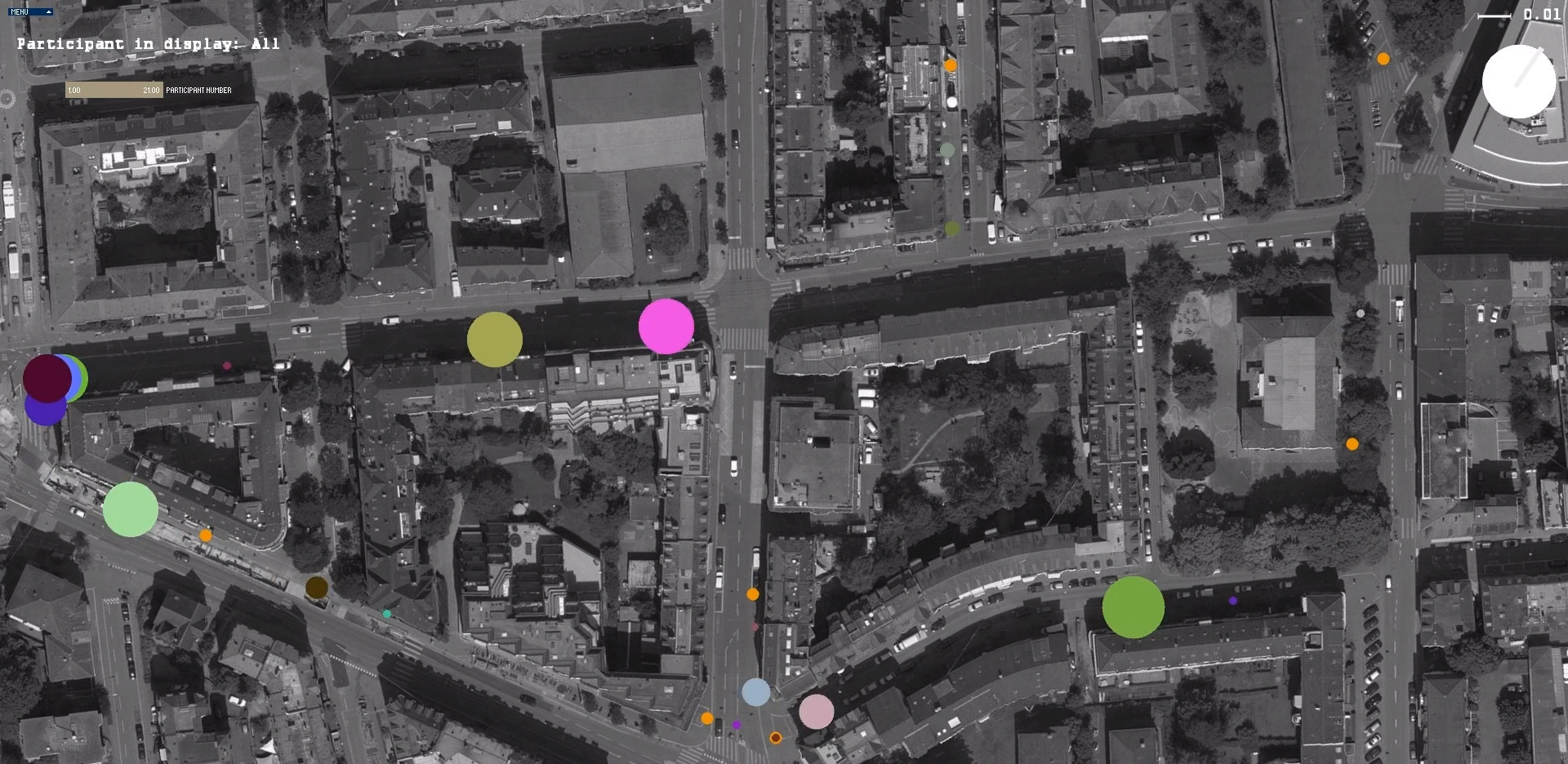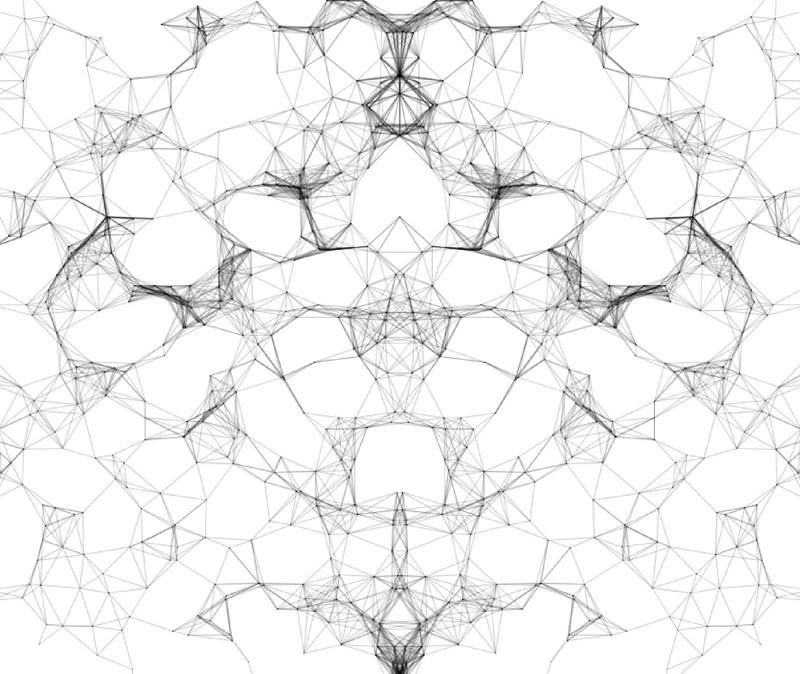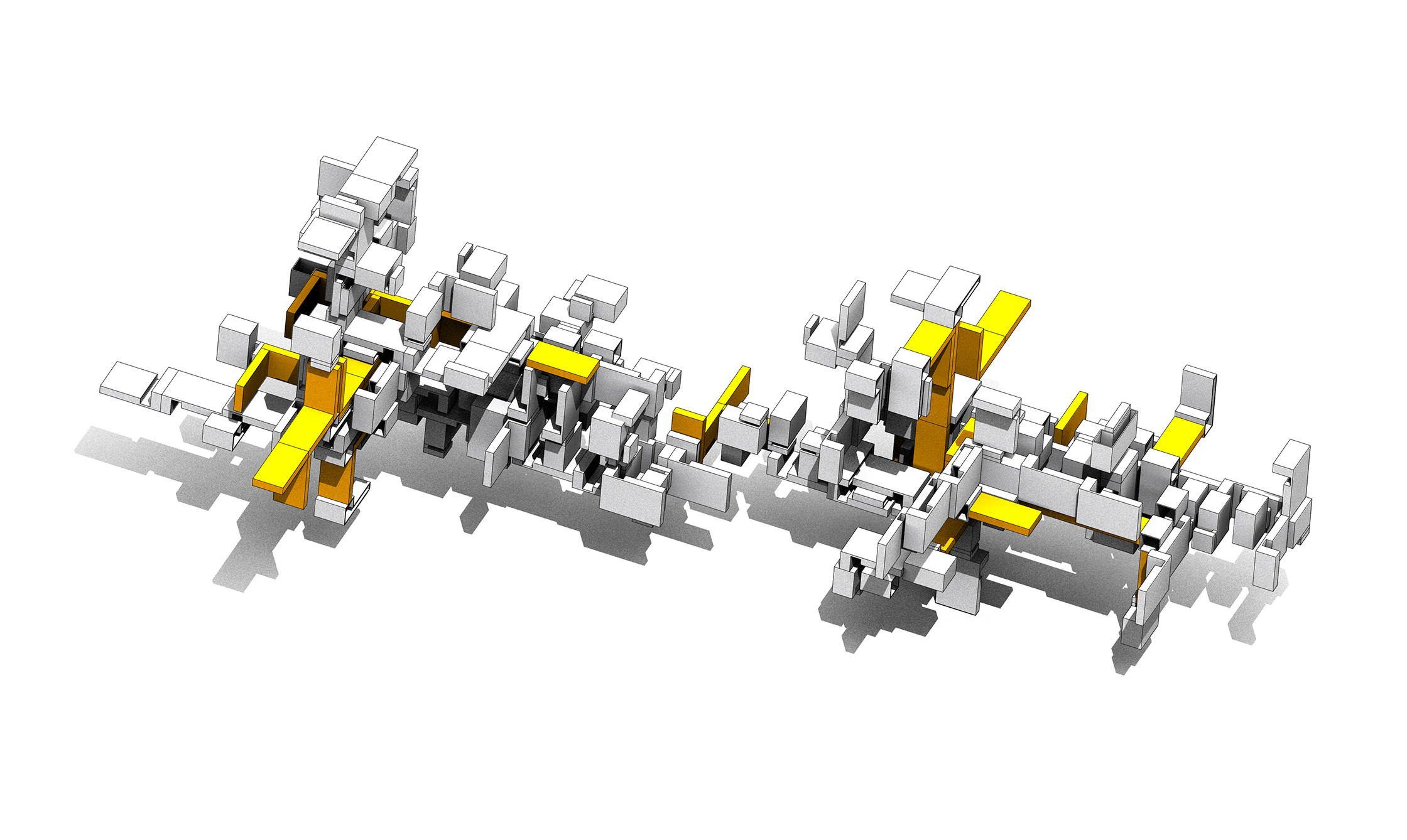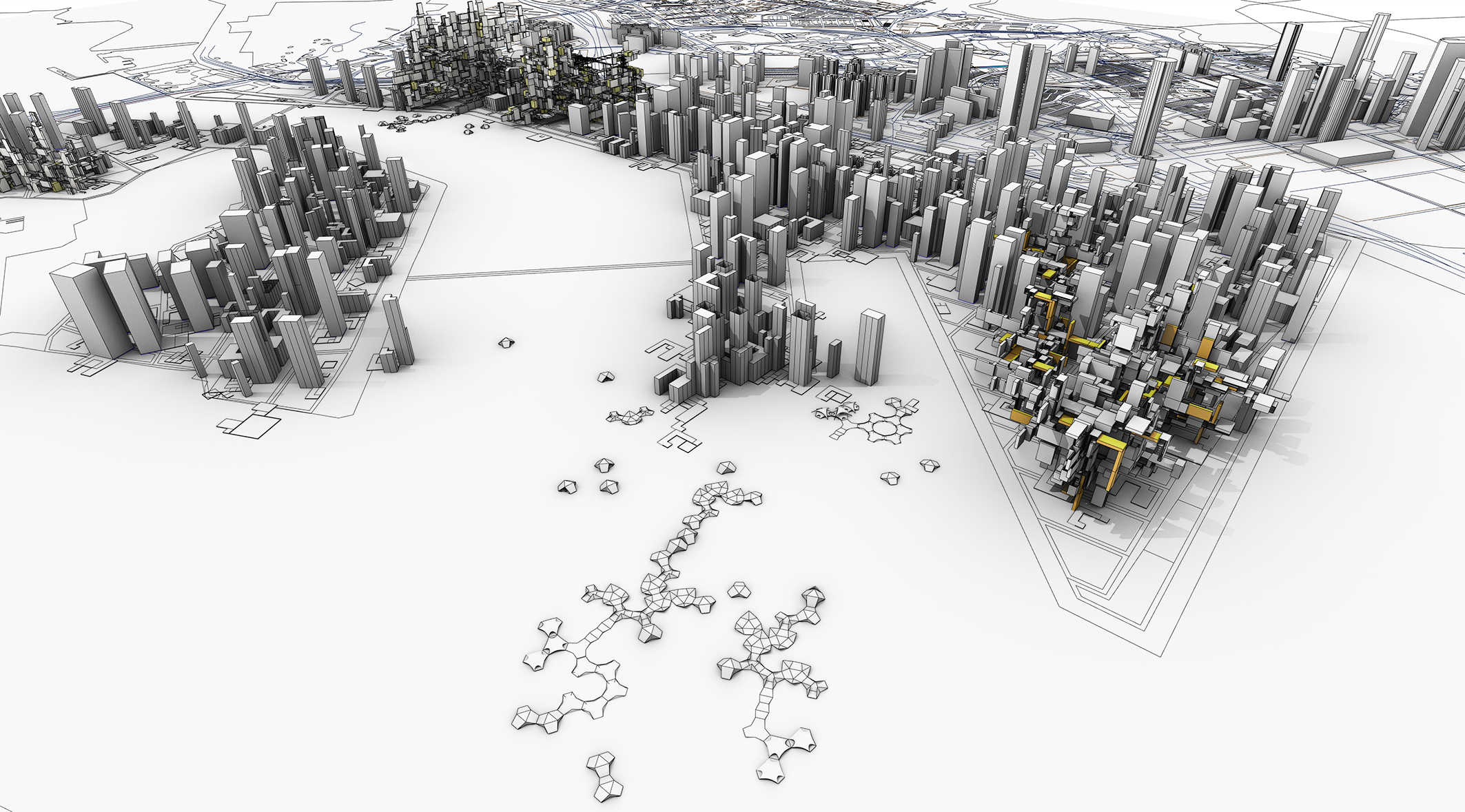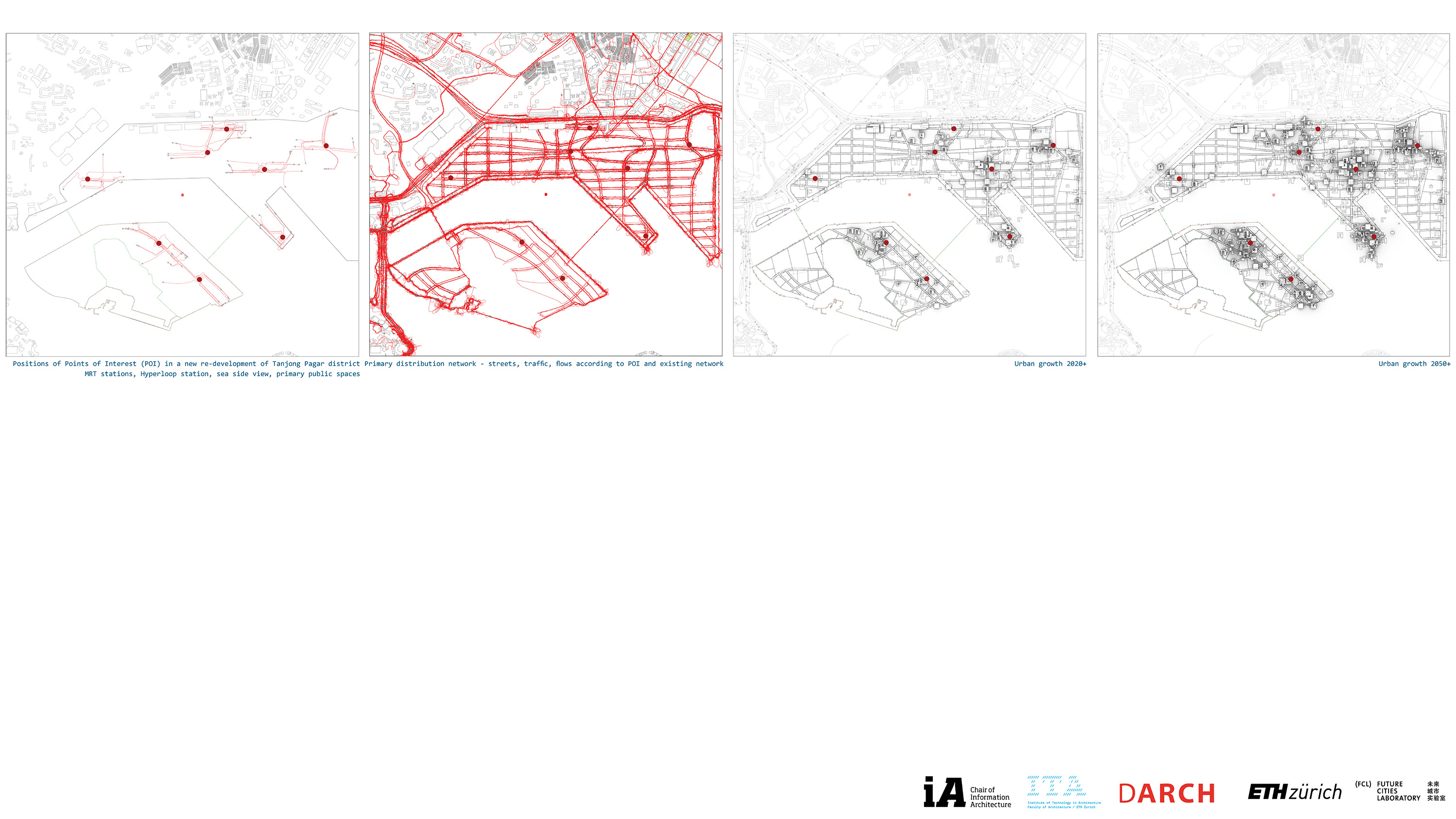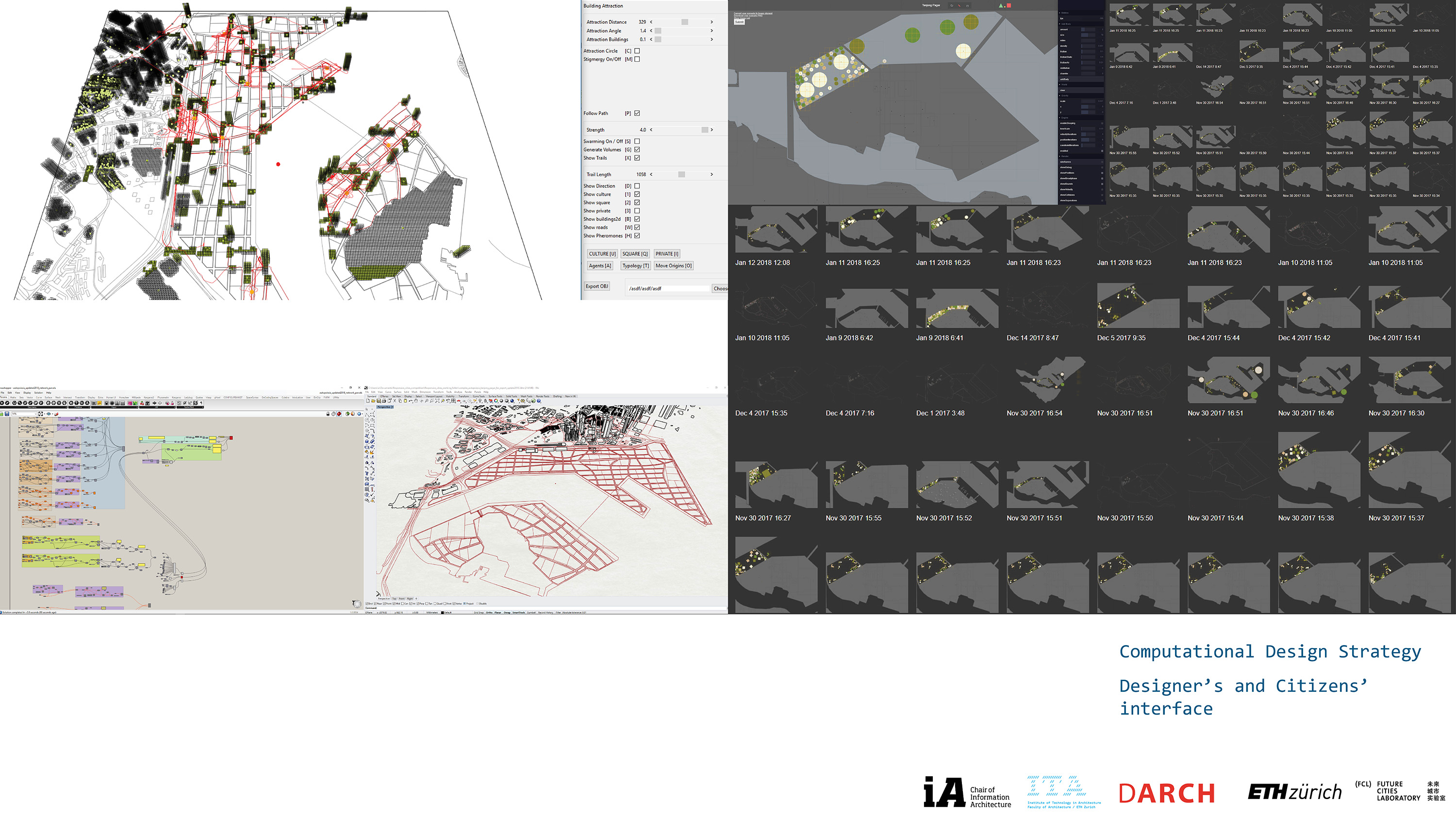Responsive City: A Vision for Tanjong Pagar Singapore 2080+ Competition Entry IAAC 2018
Related article "Large-scale Urban Prototyping" in Frontiers in Digital Humanities
Research and Design Team: Chair of Information Architecture, Department of Architecture, ETH Zürich, Peter Buš (design director, scripting, post-production, research), Lukas Treyer (programming), Chang Mei-Chih (design, scripting), Ayça Tartar (research), Jin Li (post-production).
The responsiveness of the 21st century city lies in a customisation and distinctiveness of urban environments based on end-users’ necessities, demands and requirements in respect to natural conditions and resources. The standardisation and similitude of the physical urban components will be replaced by customised and bespoke-like made constructions in urban scale using advanced computation, fabrication, construction and building methods linked with citizens’ personal devices and interfaces. The direct engagement of citizens themselves by sharing data, information, knowledge and design intentions to inform city authorities, stakeholders involved and automatic and semi-automatic construction deliveries will influence livability, well-being of people and physical appearance of the city bringing new urban identity and spatial qualities. As such, planning, design, decision making and building processes of the city will be informed by the citizens, static and dynamic data captured, measured and analysed via sensors and flying drones in order to improve living conditions within the city in real-time. These principles are applied and tested in the curently being re-developed district of Tanjong Pagar in the city of Singapore, which is being rebuilt from an industrial harbour area into a new technological, research, cultural, commercial and residential hub and it will serve as a new centre connected physically with neighbouring South-east Asian megacities via newly proposed Hyperloop infrastructure. The presentation shows possible generation of urban growth and network distribution in a dynamic agent-based model taking into account various parameters such as accessibility, spacing distances of urban elements chosen from a library by citizens or experts. These discrete components can be selected for fabrication and assembly using online interfaces and personal devices linked with authorities and construction deliveries. In such a way, the city responds to citizens' demands, requirements and dreams following shared information, data, local knowledge and intentions for an improvement.
